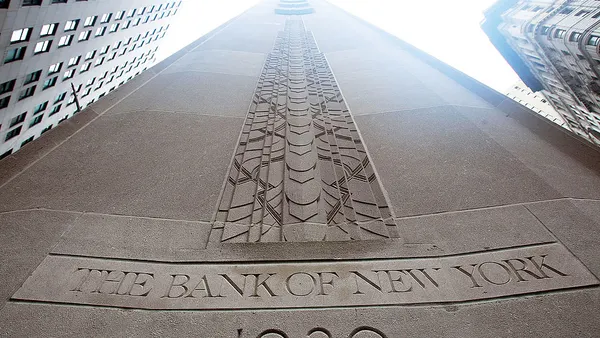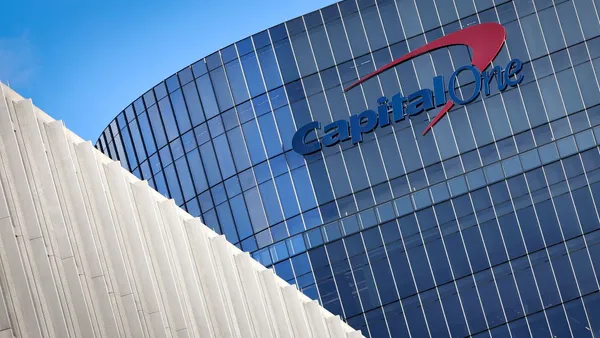Dive Brief:
- KeyBank is on track to increase its commercial banker headcount by 10% this year – targeting 170 to 180 commercial bankers by the end of 2025 – and plans to pursue more team hiring, Ken Gavrity, head of Key’s commercial bank, said Wednesday.
- Cleveland-based Key expanded its commercial banking operations in Chicago and Southern California late last year to grow middle market business, and the teams hired have already driven new customer growth, loan volume and payments business, Gavrity said at a Morgan Stanley investor conference.
- Growing its banker roster in certain geographies is crucial for the $189 billion-asset regional lender, Gavrity said. With the middle market in particular, “we haven’t necessarily been as disciplined in adding to that over time,” he said.
Dive Insight:
KeyBank serves about 4,600 middle-market clients across 27 markets and has a national footprint with its commercial payments business; those operations combined generate about $2 billion in revenue annually.
Those clients are exhibiting “cautious optimism” as tariff-related uncertainty persists, Key executives said Wednesday. Middle-market lending grew about 3% in the first quarter and “we continue to see really nice growth so far in the second quarter,” Gavrity said. The bank recorded $72.4 billion in average commercial loans in the first quarter.
The lender has given more consideration to the banker team hiring model lately, Gavrity indicated. Its Chicago hires were pulled from Ohio rival Huntington Bank, Crain’s Chicago Business reported.
“We incent bankers to deliver the whole bank,” which Gavrity said sounds straightforward, but “that isn’t the case at all of our peers.”
At some banks, that effort is part of a scorecard, but not directly rewarded, or, for some regional peers or smaller lenders, “they just don’t have the holistic set of capabilities,” he said.
“So your most talented teams look at this as an opportunity to say, OK, I get to deliver that whole product platform to the customer, I get paid for it, that’s really interesting,” Gavrity said.
The bank expects continued growth in areas where it’s expanding. Chicago and Southern California have some of the largest concentrations of middle-market companies in the U.S., he noted. In those two markets, Key installed a team lead plus four bankers.
About 40% of Key’s banker population is based out West, 30% in the middle of the country and 30% on the East Coast, a Key spokesperson said. The bank aims to continue adding bankers in all three regions.
Still, there’s no shortage of competition from lenders chasing loan growth, from a slew of regional banks bolstering their middle market teams and big banks reaching for more middle-market business.
“There’s no question that, at every client pitch, there are more banks hanging around the hoop at this point in time,” Gavrity said.
But Gavrity said he hasn’t seen that pull through to pricing competition.
“With this much interest in loan growth, could we see a little bit more pressure there? Absolutely,” he said. But to date, the bank has been able to maintain current pricing.
To middle-market customers, Key positions itself as large enough to have every capability businesses need, but small enough that services are delivered through a single team, he said.
“If you compare that to a JPMorgan or a BofA, certainly they have every capability set that we have on the payments side,” but when catering to a $200 million-revenue company, “it’s very difficult to deliver all of that to a CFO and make it feel very manageable,” he said.
In the middle market, payments business often follows lending. “So if we come in and say hey, we’re willing to extend the balance sheet here, our expectation is that we’re going to get the payments business as part of that,” he said. “A lot of the other regional peers would say, ‘Yep, we do the same thing, too,’ and then it comes to, but how do you deliver the rest of the platform?”
Key is primed for and has the infrastructure to deliver core treasury, merchant and card services in those moments, Gavrity said.
The commercial bank’s run-ins with private credit are more often cooperative than competitive, because direct lenders are looking for term loans, funded immediately, that offer higher returns, Gavrity said.
“The deals that they’re winning in the marketplace is generally a deal that I’ve already passed on or I’m not interested in being on,” he said.
Longer term, the bank sees opportunities to expand its relationships with private equity and private credit providers, offering its payments and deposit services to those companies’ customers, Gavrity said.













